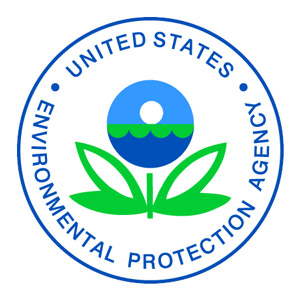
LOGO: EPA
On Dec. 30, 2022, the U.S. Environmental Protection Agency (EPA) and the U.S. Army Corps of Engineers (Corps) issued a final rule defining the waters of the United States (WOTUS). It went into effect March 20, and was developed after consideration of more than 114,000 written public comments.
It’s unlikely this will be the final word on WOTUS, however.
The definition of WOTUS changed during the Biden, Trump and Obama administrations, posing a challenge to pest management professionals (PMPs) who may be required to have a National Pollutant Discharge Elimination System (NPDES) permit to perform pest control services near bodies of water.
On March 19 — the day before the new definition went into effect — a federal court judge in Texas issued a preliminary injunction that stops the new definition of WOTUS from taking effect in Texas and Idaho. It remains in effect in all other states, however. The judge said Texas and Idaho successfully argued WOTUS threatens states’ rights and would cause irreparable harm. In addition, he said courts in other states also should have the opportunity to weigh in on the final rule. More than 25 other states have joined lawsuits that seek to vacate the final rule.
The U.S. Supreme Court also may have an impact on WOTUS.
On Oct. 2, 2022, it heard oral arguments in Sackett v. Environmental Protection Agency. The court’s decision in this case may clarify how the EPA determines the land that is subject to regulation under the Clean Water Act (CWA). Although the case calls into question whether the CWA offers protections for “adjacent wetlands,” it is widely believed the Supreme Court’s ruling may limit the EPA’s authority and invalidate the final rule.
Origins of the final rule
In 2019, the EPA and the Corps proposed an updated WOTUS rule that was finalized in early 2020. The revised definition identified four categories of waters that are federally regulated under the CWA. However, on Aug. 30, 2021, a judge overseeing a federal court case called for the revision or replacement of the Navigable Waters Protection Rule and its definition of WOTUS under the CWA. As mentioned in Pest Management Professional’s October 2021 Regulatory Report column (p. 38), the process of creating a new definition of WOTUS was expected to “stretch into the end of 2022” and that’s exactly what happened.
The final rule establishes “a durable definition of WOTUS to reduce uncertainty from changing regulatory definitions, protect people’s health, and support economic opportunity.” It also restores essential water protections that were in place under the CWA before 2015 for traditional navigable waters, the territorial seas, interstate waters, and upstream water resources that significantly affect those waters.
Opposing viewpoint
RISE (Responsible Industry for a Sound Environment), along with more than 40 national associations, voiced their opposition to the final rule defining WOTUS. They sent Congress a letter that supports the Congressional Review Act introduced in the U.S. House of Representatives to overturn the final rule. The letter stated, “Small businesses and landowners will be forced to spend tens of thousands of dollars to hire consultants and lawyers simply to determine whether there is federally jurisdictional water on their property and if they need a federal permit.” In addition, the House Transportation and Infrastructure Committee voted on Feb. 28 to approve a joint resolution to overturn the final rule.
RISE said in a statement the new rule could negatively impact important aquatic pesticide treatments that are critical to continuing to protect human health and the environment; expands waters that will fall under federal jurisdiction and require NPDES permits; and impose significant costs without corresponding environmental benefits.
More Online
The EPA and the Corps issued a fact sheet titled “A Guide for Landowners” that breaks down activities that are exempt from needing a permit. It states, “The Clean Water Act does not cover every geographic feature with water in it, nor does it subject all activities in waters meeting the definition of ‘waters of the United States’ to regulation. Puddles are not ‘waters of the United States.’”
It may be downloaded as a PDF at Bit.ly/3JH32oE.
Leave A Comment